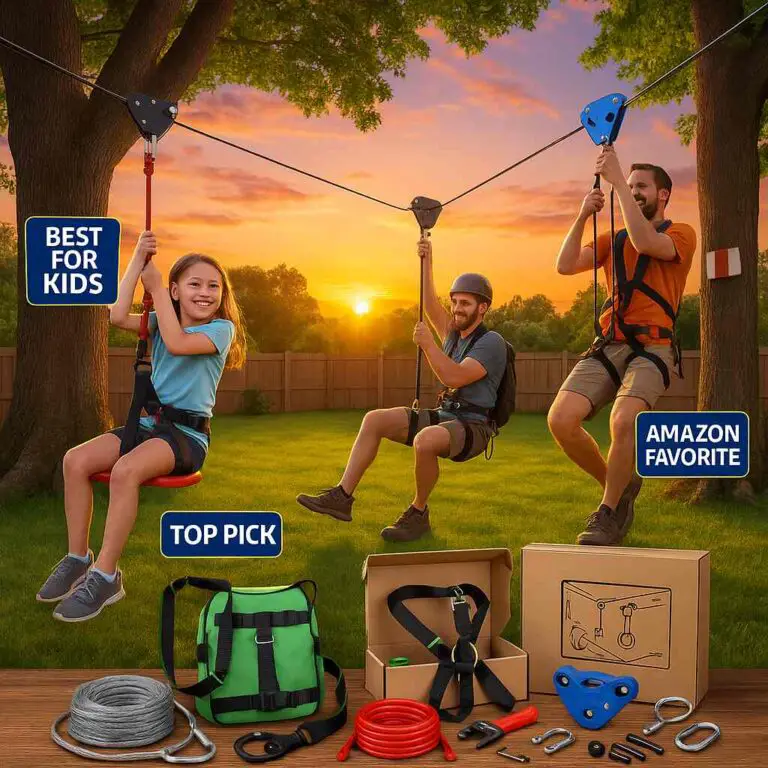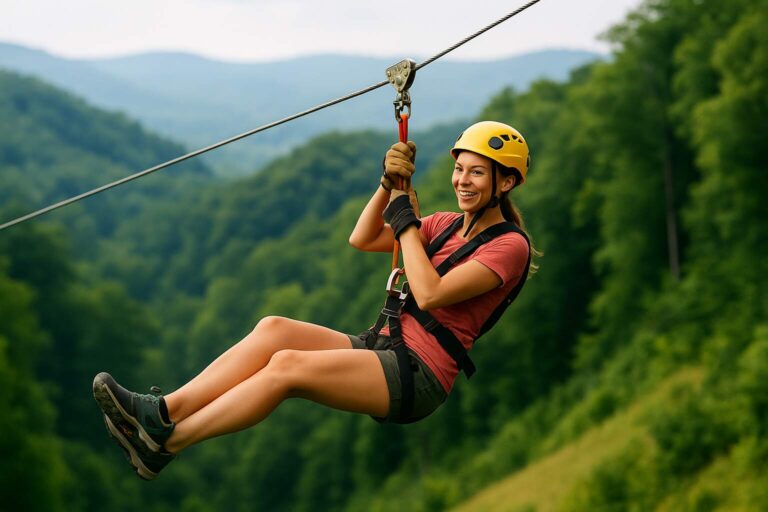Ziplining is an exhilarating and adventurous activity that has gained popularity in recent years. However, it is important to ensure safety measures are in place before embarking on this thrilling experience. Zipline safety equipment plays a crucial role in ensuring the safety of participants.
A zipline safety equipment includes a harness, helmet, trolley, gloves, and carabiners. It is crucial to choose the right equipment that fits properly, is made of high-quality materials, and meets industry standards. Regular maintenance and inspection of safety equipment are also crucial to ensure optimal performance and longevity. And participants should receive proper training, inspect equipment before each use, and use safety equipment correctly to avoid common safety mistakes.
In this article, I will discuss the different types of safety equipment required for ziplining, how to choose the right equipment, the importance of proper maintenance and inspection, common safety mistakes to avoid, and my final recommendations for a safe and enjoyable ziplining experience. Read on!
Zipline safety equipment
- Harness: A harness is a piece of equipment that fits around the waist and legs of the participant and is attached to the zipline cable. Harnesses prevent the participant from falling off the zipline cable in case of a slip or malfunction. Check out this high-quality harness on Amazon.
- Helmet: A helmet is a protective headgear worn by the participant to protect against head injuries. Helmets protect the participant’s head from collisions with tree branches or other obstacles while ziplining. Browse this durable helmet on Amazon.
- Trolley: A trolley is a device that attaches the participant’s harness to the zipline cable and enables smooth movement along the cable. Trolleys provide a safe and smooth zipline experience and prevent the participant from getting stuck or losing momentum. Here are the most reliable trolleys.
- Gloves: Gloves are protective gear worn on the hands to protect against rope burns and blisters. Gloves provide a better grip on the zipline cable and prevent hand injuries. Purchase these comfortable gloves on Amazon.
- Carabiners: Carabiners are metal clips that attach the participant’s harness to the trolley or zipline cable. Carabiners secure the participant’s harness to the zipline cable and prevent accidental detachment. Get these sturdy carabiners.
Note: It is essential to use all the above equipment in combination for maximum safety while ziplining.
Choosing the right safety equipment
Proper sizing and fitting
- The harness should fit snugly around the waist and legs of the participant to prevent slippage or detachment.
- The helmet should fit properly and cover the entire head to provide maximum protection.
- Gloves should fit well and provide a comfortable grip without slipping.
Quality of materials
- Safety equipment should be made of high-quality materials that are durable and able to withstand wear and tear.
- Check for any signs of wear or damage before each use.
- Choose safety equipment from reputable manufacturers that adhere to industry standards.
Certification and Standards
- Look for safety equipment that is certified by industry standards organizations such as ASTM International or the International Safety Equipment Association (ISEA).
- Ensure that the equipment meets or exceeds the minimum safety requirements for ziplining.
Note: It is crucial to invest in high-quality and properly fitting safety equipment to ensure maximum safety during ziplining.
Maintenance and inspection of safety equipment
Inspection before each use
- Check the harness for any signs of wear, such as frayed straps or broken buckles.
- Inspect the helmet for any cracks, dents, or damage.
- Check the trolley for any signs of wear, such as bent or broken parts.
- Inspect the gloves for any signs of wear or damage.
- Check the carabiners for any signs of wear, such as rust or deformation.
Regular maintenance
- Clean safety equipment regularly with mild soap and water.
- Store safety equipment in a dry and cool place.
- Replace any damaged or worn equipment immediately.
Proper storage
- Store safety equipment in a dry and cool place away from direct sunlight.
- Keep safety equipment away from sharp objects or chemicals that may damage it.
- Ensure that safety equipment is not exposed to extreme temperatures that may affect its performance.
Note: Proper maintenance and inspection of safety equipment are essential to ensure its optimal performance and longevity.
Common safety mistakes and how to avoid them
Lack of proper training
- Ziplining requires proper training and instruction to ensure safety.
- Participants should receive instructions on how to use safety equipment and how to handle emergencies.
Failure to inspect the equipment
- Failing to inspect safety equipment before use can result in equipment failure and injury.
- Inspect all equipment before each use and replace any damaged or worn equipment immediately.
Improper use of safety equipment
- Using safety equipment incorrectly can result in serious injury or death.
- Ensure that safety equipment is used as instructed and according to industry standards.
Note: It is essential to receive proper training, inspect equipment before each use, and use safety equipment correctly to avoid common safety mistakes while ziplining.
Conclusion
Ziplining can be a fun and exciting activity, but safety should always come first. Proper safety equipment, including a harness, helmet, trolley, gloves, and carabiners, is essential to ensure the safety of participants. It is important to choose the right equipment that fits properly, is made of high-quality materials, and meets industry standards.
Regular maintenance and inspection of safety equipment are also crucial to ensure optimal performance and longevity. To avoid common safety mistakes, participants should receive proper training, inspect equipment before each use, and use safety equipment correctly. By utilizing the right zipline safety equipment and following these guidelines, participants can enjoy a safe and enjoyable ziplining experience.
Read how the zipline braking system works in this complete guide.








